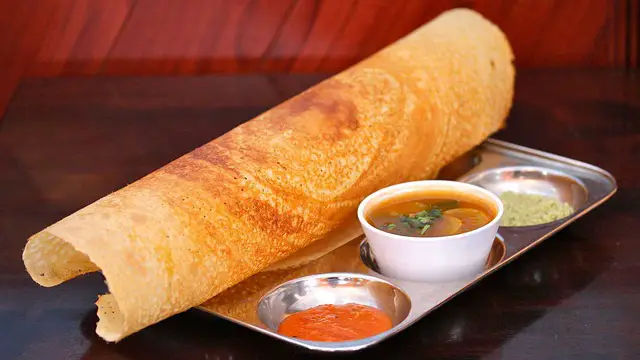Indian food features diverse regional cuisines with spices, while Pakistani cuisine has some overlaps but often uses more meat and fewer spices.
TL;DR Indian Food Vs. Pakistani Food
Indian cuisine is known for its vibrant flavors, extensive use of spices, and regional variations. Whether it’s the fiery curries of South India or the aromatic biryanis of North India, Indian food offers a wide range of dishes to suit every palate.
Pakistani cuisine, on the other hand, takes inspiration from various regions including Punjab, Sindh, Balochistan, and Khyber Pakhtunkhwa. It is characterized by its hearty meat-based dishes such as kebabs and karahi along with flavorful rice preparations like pulao and biryani.
Introduction to Pakistani cuisine

Pakistani cuisine is a delightful blend of flavors, spices, and techniques that have been influenced by various cultures throughout history. With roots in the region’s rich cultural heritage, Pakistani food showcases a unique combination of traditional recipes and modern culinary innovations.
One of the defining features of Pakistani cuisine is its diverse range of dishes. From hearty meat curries to fragrant rice pilafs and succulent kebabs, there is something for everyone on the menu. The use of aromatic spices such as cumin, coriander, turmeric, and garam masala adds depth and complexity to these dishes.
Another characteristic aspect of Pakistani food is its love affair with barbecue. Grilled meats like seekh kebabs (spiced minced meat skewers) and tikka (marinated chunks of meat) are popular choices at outdoor gatherings or street-side stalls. These smoky delights are often served with fresh naan bread or accompanied by tangy chutneys.
A significant influence on Pakistani cuisine comes from Mughlai traditions. Rich biryanis layered with fragrant rice and tender pieces of chicken or mutton reflect this royal lineage. Similarly, indulgent desserts like kheer (rice pudding), gulab jamun (syrup-soaked dough balls), and sheer khurma (vermicelli pudding) showcase an opulent side to Pakistani sweets.
The diversity within Pakistan also plays a role in shaping regional cuisines across the country. Each province has its own specialties that highlight local ingredients and cooking styles. For example, Sindhi cuisine offers fiery curries made with fish or vegetables while Punjabi cuisine boasts robustly spiced dishes like butter chicken.
In recent years, Pakistani street food has gained popularity worldwide for its bold flavors and enticing aromas. From crispy samosas filled with savory potatoes to spicy gol gapay chat topped with yogurt sauce – these quick bites offer a burst of flavor in every bite.
Introduction to Indian cuisine

Indian cuisine is renowned for its rich diversity, vibrant flavors, and deep cultural roots. It’s a tapestry of tastes and traditions, reflecting the country’s vast geography, history, and diverse regional influences. From the streets of Mumbai to the palaces of Rajasthan, Indian food offers an array of culinary experiences.
Key elements of Indian cuisine include spices, which play a central role in creating unique and complex flavors. Common spices like cumin, coriander, turmeric, and cardamom are used in various combinations, resulting in dishes that range from mildly spiced to fiery hot.
Indian cuisine is also characterized by its variety of bread, with staples like naan, roti, and paratha. These are often paired with aromatic curries, gravies, or daals (lentil dishes). Rice, particularly Basmati rice, is another staple that serves as a foundation for many dishes.
Vegetarianism is prevalent in Indian cuisine, especially among Hindus, leading to an extensive range of vegetarian dishes. However, India is also known for its diverse meat preparations, with chicken, lamb, and goat being popular choices.
Indian food varies greatly by region, with North India known for its tandoori dishes, South India for its spicy and coconut-based flavors, and coastal regions emphasizing seafood. Additionally, street food culture is an integral part of Indian cuisine, with chaats, dosas, and kebabs enjoyed by millions daily.
Overall, Indian cuisine is a harmonious blend of tradition, spices, and regional influences, making it a delightful journey for the senses and a cultural treasure appreciated worldwide.
Indian Food Vs. Pakistani Food – Key differences
| Aspect | Indian Food | Pakistani Food |
|---|---|---|
| Regional Diversity | Offers a vast array of regional cuisines, each with distinct flavors and dishes | Also diverse, with various regional specialties, but less extensive than Indian cuisine |
| Spice Levels | Features a wide range of spice levels, with many dishes offering varying degrees of heat | Generally, milder in terms of spiciness; more emphasis on aromatic spices |
| Bread Varieties | Known for a variety of bread, including naan, roti, and paratha | Also includes a variety of bread like naan, but less emphasis on diversity |
| Vegetarian Options | Offers numerous and diverse vegetarian options due to cultural and religious factors | Has vegetarian dishes but often places a heavier emphasis on meat-based dishes |
| Meat Preparations | Includes a range of meat dishes, particularly in regions like the North, featuring tandoori and curries | Meat dishes are also prevalent, but there may be regional differences in cooking styles |
| Use of Lentils | Utilizes lentils (daals) extensively in various dishes | Includes lentils in cuisine, but with some variation in preparation |
| Spice Blend | Utilizes a blend of spices that can be complex and distinct to each region | Employs aromatic spices but often with less complexity and heat |
| Street Food Culture | Rich street food culture with popular snacks like chaats, dosas, and kebabs | Street food culture exists with dishes like samosas, pakoras, and haleem |
| Sweets and Desserts | Offers a wide range of sweets, including traditional treats like gulab jamun and jalebi | Also boasts a variety of sweets, like halwa and sheer khurma, with regional variations |
Popular dishes in Indian cuisine
Indian cuisine offers a wide array of popular and delectable dishes. Some of the most well-known ones include:
- Biryani: Fragrant rice dish cooked with spices, meat (often chicken or mutton), and sometimes vegetables. Varieties include Hyderabadi, Lucknowi, and Kolkata biryani.
- Butter Chicken: A creamy tomato-based curry with tender pieces of chicken, usually served with naan or rice.
- Tandoori Chicken: Marinated chicken cooked in a tandoor (clay oven), resulting in smoky, flavorful, and tender meat.
- Paneer Tikka: Cubes of Indian cottage cheese (paneer) marinated in spices and grilled or cooked in a tandoor.
- Chole Bhature: A popular North Indian dish consisting of spicy chickpea curry (chole) served with deep-fried bread (bhature).
Popular dishes in Pakistani cuisine
Pakistani cuisine is known for its flavorful and diverse dishes. Here are some popular Pakistani dishes:
- Biryani: Fragrant rice dish with spices and meat (often chicken, mutton, or beef), including variations like Sindhi Biryani and Karachi Biryani.
- Nihari: A slow-cooked, spicy stew traditionally eaten for breakfast, often made with beef or mutton.
- Haleem: A thick porridge made from wheat, barley, lentils, and meat, cooked with spices and served with garnishes.
- Karahi: Various dishes cooked in a wok-like pan (karahi), including Chicken Karahi and Lahori Karahi.
- Samosas: Deep-fried pastries filled with spiced potatoes, peas, and sometimes meat.
Image Credits
Featured Image By – nurabooo from Pixabay
Image 1 By – Seb Powen from Pixabay
Image 2 By – PublicDomainPictures from Pixabay









